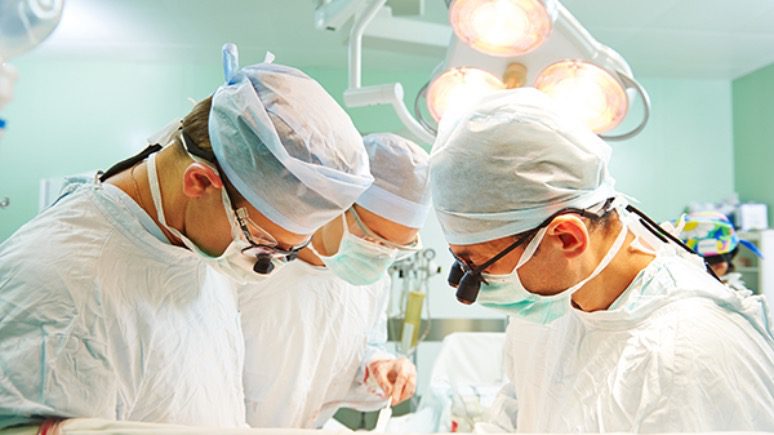Spina Bifida treatment
When a child with Spina Bifida is born, a referral is usually made to a neurologist who can consult with other specialists as needed. In addition, children with Spina Bifida are at risk for other conditions such as clubfoot. Spina Bifida treatment for this typically involves stretching, casting, and bracing.
If these are not successful, Spina Bifida surgery may be necessary. A child with Spina Bifida usually is monitored throughout life for complications related to their condition. It is especially important to monitor the skin so pressure ulcers do not develop.
Most children with the mild type of Spina Bifida do not need Spina Bifida treatment. Children with Meningocele may not require treatment as well. However, children with the most severe form of Spina Bifida ordinarily require extensive treatment, including surgery.
A child with Hydrocephalus will require Spina Bifida treatment surgery to insert a shunt. It diminishes pressure on the cerebrum by depleting the overabundant fluid into the belly. This reduces the swelling from doing more harm to the brain.
Is surgery necessary for Spina Bifida?
Several types of surgeries may be necessary for Spina Bifida treatment depending on the severity of the condition. For example, if a child has clubfoot, lengthening of certain tendons may be recommended, or the realignment of bones may also be necessary. Spine surgery may be needed if the child has significant spinal curvature, loss of balance, or has trouble sitting. Spina Bifida treatment relies on the seriousness of the condition. Spina Bifida Occulta frequently does not require Spina Bifida treatment at all, however different types of Spina Bifida will require surgery.
Spina Bifida surgery
Meningocele treatment includes Spina Bifida surgery to set the meninges back and close the opening in the vertebrae. Myelomeningocele additionally requires surgery, typically within 24 to 48 hours after birth.
Planning out the Spina Bifida treatment early can help limit the danger of the disease related to the uncovered nerves and may likewise help shield the spinal cord from extra injury. A neurosurgeon returns the spinal cord and uncovered tissue inside the infant’s body during the Spina Bifida surgery and covers them with muscle and skin. Occasionally a shunt is inserted to control Hydrocephalus in the child’s brain during the surgery.
Pre-birth Surgery
In this method — which happens before the 26th week of pregnancy — specialists open the uterus and repair the infant’s spinal cord. The proponents of fetal surgery trust that the nerve function in babies with Spina Bifida appears to intensify quickly after birth, so it might be a better option to repair Spina Bifida defects while the infant is still in the uterus.
Children who got the fetal surgery require fewer shunts and are less inclined to require braces or other walking devices. However, there are several risks with the surgery since it poses dangers to the mother and significantly increases the danger of unexpected labor.
Continuous Care
Spina Bifida treatment does not end with surgery. In babies with Myelomeningocele, irreparable nerve damage has occurred, and continuous care from a multidisciplinary group of specialists, doctors, and advisors is typically required.
Infants with Myelomeningocele may require numerous procedures for a variety of complications. Loss of motion and bladder issues regularly remain, and treatment for these conditions ordinarily starts not long after birth.
Infants with Myelomeningocele may also begin therapy and exercises that will develop their legs for walking with braces or bolsters when they are older. In addition, many have a fastened spinal cord — a condition in which the spinal cord is bound to the closure scar and is less ready to appropriately develop in terms of length as the child develops. This dynamic “tying” can cause loss of muscle work in the legs, gut, or bladder. Surgery can decrease the level of inability and may also reestablish some of its capacity.
Cesarean birth
Cesarean birth can be one of the Spina Bifida treatments. Many children with Myelomeningocele tend to be in a feet-first (breech) position. On the off chance that your child is in this position or if your specialist has identified an expansive growth, cesarean birth might be a more secure approach to deliver your infant.
Useful Advice
There are numerous ways you can continually support your child with Spina Bifida:
- Make sure to attend all scheduled doctor’s appointments.
- Encourage your child to be dynamic, and urge him or her to be as free as can be expected under the circumstances.
- Urge your child to drink a lot of water and eat foods high in fiber, for example, fruits and grains. These counteract blockage.
- Check your child’s skin every day for cuts, wounds, and bruises. Children who have practically no feeling in their legs and feet may get hurt and not know it. What is more, this could prompt an infection.
- Make sure to get your child’s vision checked consistently. Children with Spina Bifida frequently have weak eye muscles.
- Look for learning disorders and converse with your child’s specialist or educator if you have any worries.
















Leave a Reply
You must be logged in to post a comment.